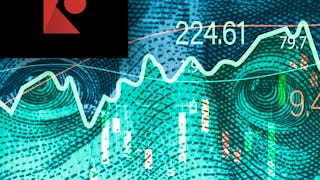Welcome to the Macroeconomics course! This course is designed to provide you with a deep understanding of what an economy is, how it operates, and the factors that sustain and influence economic activity, including the role of policy interventions. You will explore macroeconomic policy analysis at the national level, essentially focusing on short-term macroeconomics, generally described as macroeconomic stabilization against growth or long-term macroeconomics. You will comprehend the theoretical frameworks through a contextualized treatment of concepts considering the experiences in the developing world and the global economy. You will get familiarized with the major macroeconomic debates. The course emphasizes intuitive learning of concepts with the help of diagrams, with only limited reliance on statistical or mathematical techniques.


您将学到什么
Examine macroeconomic variables, estimation, and their interpretation in a real-world context.
Evaluate the conceptual macroeconomic frameworks and analytical tools to understand the working of an open economy.
Elaborate the working of fiscal and monetary policy and the institutional context in a developing economy.
您将获得的技能
要了解的详细信息

添加到您的领英档案
22 项作业
了解顶级公司的员工如何掌握热门技能

该课程共有7个模块
This module introduces you to the basic macroeconomics concepts, macroeconomic indicators, and related terminologies. It defines an economy, its actors, and the notion of output gap. You will look at the circular flow of income, which highlights the importance of the system’s economic stability in sustaining economic activity and growth.
涵盖的内容
7个视频2篇阅读材料3个作业
This module discusses the measurement of macroeconomic indicators and related issues. It is essential to track economic activity and provide evidence-based policy prescriptions when there are concerns about the stability and sustainability of the economy with consequences for the behavior of various economic agents. It elaborates conventions that guide the system of national income accounting. You will also discuss the use of GDP as an indicator of economic activity, its limitations, and its use in tracking human and social well-being.
涵盖的内容
8个视频1篇阅读材料4个作业
This module discusses the conceptual or the theoretical underpinnings of aggregate supply and demand schedules. It elaborates on the Classical and Keynesian premises of macroeconomic analysis. This is followed up with an elaboration of empirical evidence for the aggregate supply schedule by visiting the Phillips curve and its modern interpretation involving the relationship between inflation and unemployment.
涵盖的内容
7个视频1篇阅读材料4个作业
The aggregate demand, the Keynesian contribution to macroeconomic analysis, is the main driver in the short-term stabilization of the economy. This module discusses the components of aggregate demand – consumption, investment, government spending, and net exports. By analyzing the demand for money and how the money market works, you will gain insights into developing an integrated treatment of the goods and the money market.
涵盖的内容
7个视频1篇阅读材料2个作业
This module advances you to macroeconomic analysis by integrating the functioning of the money and the goods markets with the help of the IS-LM analytical tool kit. It goes on to elaborate the use of fiscal and monetary policy, identifying the application of specific policy instruments, for macroeconomic stabilization of an economy. It also discusses the institutional context of conducting fiscal and monetary policy.
涵盖的内容
7个视频1篇阅读材料4个作业
This module takes the final step in bringing macroeconomic analysis to the real-world context. It includes the external sector, thereby opening up the scope for capital flows, apart from trade in merchandise and services in the economy. You will look at the functioning of foreign exchange markets against the backdrop of flexible exchange rate regimes and some others. It goes on to highlight the efficacy of fiscal and monetary policy in the context of an open economy.
涵盖的内容
7个视频2篇阅读材料3个作业
This module highlights some important macroeconomic debates and their influence on the development thinking of the times. It traces how the role of the state and markets evolved in that context. It discusses the success stories of the 20th century and the countries that transited from the developing status to the developed ones. You will explore how that transition may have been helped using unorthodox or heterodox macroeconomic policy instead of the orthodox prescription pursued in this course. The module also describes the contours of a heterodox macroeconomic policy approach.
涵盖的内容
7个视频2篇阅读材料2个作业
攻读学位
课程 是 O.P. Jindal Global University提供的以下学位课程的一部分。如果您被录取并注册,您已完成的课程可计入您的学位学习,您的学习进度也可随之转移。
位教师

从 Business Essentials 浏览更多内容
 状态:预览
状态:预览O.P. Jindal Global University
 状态:预览
状态:预览O.P. Jindal Global University
 状态:免费试用
状态:免费试用Fundação Instituto de Administração
 状态:免费试用
状态:免费试用Interactive Brokers
人们为什么选择 Coursera 来帮助自己实现职业发展




常见问题
To access the course materials, assignments and to earn a Certificate, you will need to purchase the Certificate experience when you enroll in a course. You can try a Free Trial instead, or apply for Financial Aid. The course may offer 'Full Course, No Certificate' instead. This option lets you see all course materials, submit required assessments, and get a final grade. This also means that you will not be able to purchase a Certificate experience.
When you purchase a Certificate you get access to all course materials, including graded assignments. Upon completing the course, your electronic Certificate will be added to your Accomplishments page - from there, you can print your Certificate or add it to your LinkedIn profile.
Yes. In select learning programs, you can apply for financial aid or a scholarship if you can’t afford the enrollment fee. If fin aid or scholarship is available for your learning program selection, you’ll find a link to apply on the description page.
更多问题
提供助学金,



